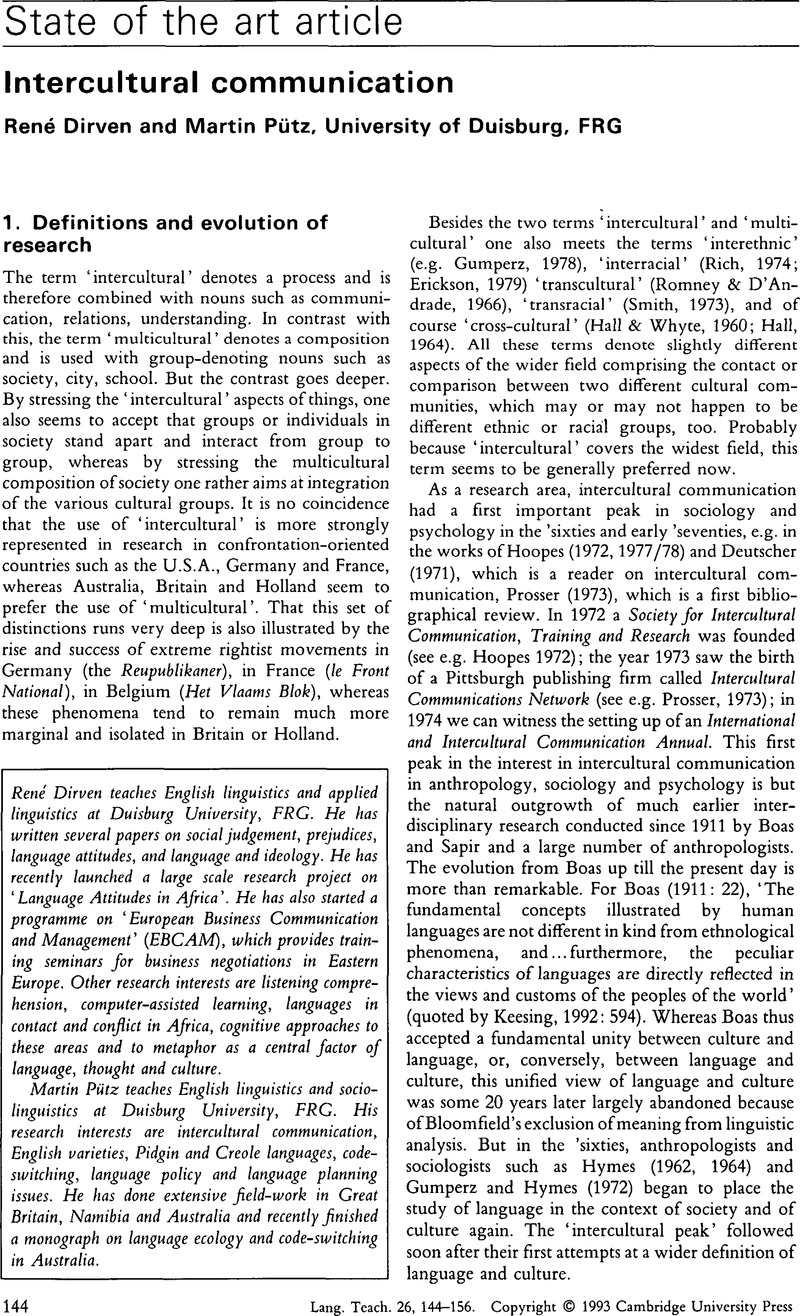Crossref Citations
This article has been cited by the following publications. This list is generated based on data provided by Crossref.
van der Walt, Christa
1997.
English as a Language of Learning in South Africa: Whose English? Whose Culture?.
Language Awareness,
Vol. 6,
Issue. 2-3,
p.
183.
LoCastro, Virginia
1997.
Politeness and pragmatic competence in foreign language education.
Language Teaching Research,
Vol. 1,
Issue. 3,
p.
239.
Toplava, Antoanita
1999.
Zu einigen Aspekten der deutsch-bulgarischen interkulturellen Kommunikation.
ITL - International Journal of Applied Linguistics,
Vol. 125-126,
Issue. ,
p.
319.
Pincas, Anita
2001.
Culture, cognition and communication in global education.
Distance Education,
Vol. 22,
Issue. 1,
p.
30.
Skelton, J R
Kai, J
and
Loudon, R F
2001.
Cross-cultural communication in medicine: questions for educators.
Medical Education,
Vol. 35,
Issue. 3,
p.
257.
Skelton, J R
Kai, J
and
Loudon, R F
2001.
Cross‐cultural communication in medicine: questions for educators.
Medical Education,
Vol. 35,
Issue. 3,
p.
257.
Myles, Johanne
and
Cheng, Liying
2003.
The social and cultural life of non-native English speaking international graduate students at a Canadian university.
Journal of English for Academic Purposes,
Vol. 2,
Issue. 3,
p.
247.
Mekheimer, Mohamed Amin A.
and
Aldosari, Hamad
2011.
Impediments to cultural teaching in EFL programmes at a Saudi University.
Journal of Intercultural Communication,
Vol. 11,
Issue. 2,
p.
1.
Entenmann, Steffen Karl
and
Schmitt, Christine Brigitte
2013.
Actors’ perceptions of forest biodiversity values and policy issues related to REDD+ implementation in Peru.
Biodiversity and Conservation,
Vol. 22,
Issue. 5,
p.
1229.
Mekheimer, Mohamed Amin
and
Fageeh, Abdulaziz
2024.
EFL College Programmes In Egypt And Saudi Arabia: Advantages And Difficulties In Intercultural Instruction.
Journal of Intercultural Communication,
p.
128.


